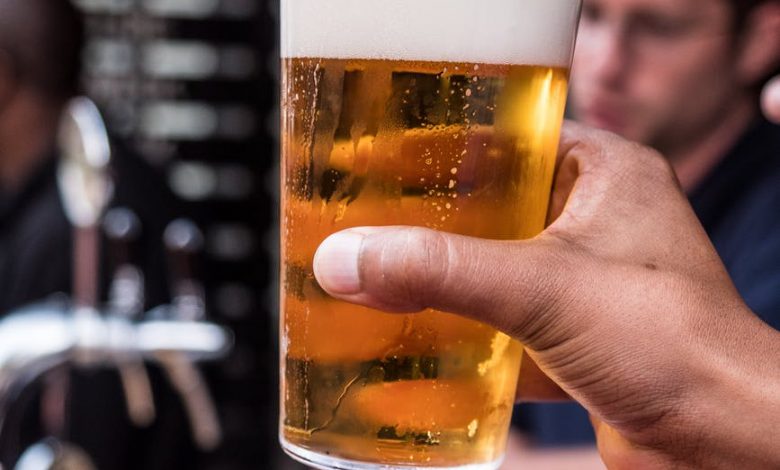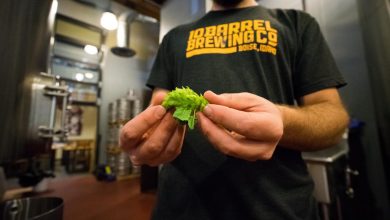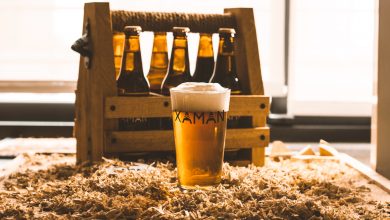Kölsch: The Art of Microbrewery

Everybody in the world generally wants to have crisp beer from brew pubs over the commercial beer. A genuine beer lover will reveal to you that a portion of the world’s finest beer originates from microbreweries. The explanation being is the microbrewery has that tendency of freedom, advancement, and experimentation with the flavor and taste. That is the reason that microbrew isn’t just our most loved, but also our most popular all around the globe. Among the famous microbreweries, Kölsch is something you will never forget.
Kölsch is an extraordinary styled beer because it is matured with beer yeast, and then completed with lagering. The outcome is the best of the universe: A light simple drinking ale that leaves a fresh and crisp aftertaste.
The most fundamental approach to differentiate lagers in various styles is through yeast. By a long shot, the two biggest groups are brews and ales. Technically, brews are blended with top maturing yeasts, normally at hotter temperatures (such as IPAs). In the interim, ales are blended with base-maturing yeasts, commonly at cooler temperatures (such as Pilsners). Be that as it may, imagine a scenario where you can’t pick between a beer and ale. At that point, a Kölsch will be your brew of choice!
Origins of Kölsch
As an energetic microbrew drinker, you might have seen Kölsch lager getting well-known with American microbrew makers and consumers as well. Kölsch style brew has a captivating history and convention, without a doubt having an influence in forming the present brew culture. Possibly, you have tasted this tasty and extraordinary style. Kölsch has gotten on among American microbrewers, who are finding a tasty brew, as well as an inventive brewing practice focused around a capital on the Rhine.
Thinking back on brew history, we may see times of impact that on a very basic level change the way of life and practices that make the drink that we know as the brew. The development of Kölsch brew is among those times. When discussing Kölsch lager, one can be alluding to a distinct yeast, however, more explicitly to an exceptional style along with brewing legacy. This style is established in the blending convention that exudes from Cologne (Köln) Germany. Here in this city, through the seventeenth century, is the place where the seeds are planted for the Kölsch that we appreciate today.
The Kölsch style has its origins in a period of aficionado German lager brewers, who, to battle cheap ingredients and dreadful brewing traditions, embraced a mandate to only brew lager. The brew is a beer created with top maturing and warm yeast, and that is unique in relation to ale lager – which is made with base maturing and cold ale yeast (ales proceeding to be cold put away for an all-encompassing period in a procedure known as “lagering”). This solitary lager mandate was an endeavor by these producers to institutionalize the manner in which lager was being brewed within the city of Cologne. The reason for their enthusiast energy for brewing just lagers was the trashy and terrible inventions that were marketed as brew in the seventeenth century. The brew was of so low quality near Cologne that numerous benefactors of neighborhood bars routinely drank spoiled and souring lager. One reason for this tragedy was that hops were not still the staggering option for spicing brew. Hops were contending with numerous other bittering and enhancing herbs; these all, by and large, were alluded to as “gruit.” For what reason did hops have a significant effect? Because hops contain antimicrobial attributes and help in keeping lager untainted for longer. This joining with their taste and bittering characteristics made hops a significant ingredient to the improved lager.
To attempt to inspire the great brewing along with the ingredient traditions, the brew makers of Cologne gave a few commands of appropriate fermenting practices. They expelled many brewers who were not fitting in with these seventeenth-century lager mandates, comprising any base-matured brew. The Kölsch style is the conclusion of this history, bringing about the mixing of procedures and the advancement of Kölsch brew in the twentieth century.
The individuals who have ever toured Germany realize that the Germans have an adoration for ale brew, and 1600s individuals in Germany were the same. Since ale was, and is, extremely popular in the vast majority of Germany, the brew makers of Cologne advanced a trade-off for the neighborhood lager brewer and consumers. This trade-off was created from a hybridized fermenting style. The new and one of a kind blending approach utilized both beer and ale characteristics. Cologne brew makers utilized a top-maturing, warm brew yeast, yet then after maturing, the brew makers would cold store the beer brew as someone would do to an ale lager, making a tasty and brilliant sensation for the consumers.

First getting its title “Kölsch” in the year 1918, the title was kept as a praise for the city that started this unique style of lager. At that point, and in the year 1986, the “Kölsch Konvention” was set up by the brew makers of Cologne, concurring upon a fixed blending procedure that must be utilized, and limited the utilization of the title “Kölsch” to distilleries that were inside 30 miles of Cologne Germany.
At long last, in the year 1997, the European Union provided Kölsch with an ensured land sign protected geographical indication (PGI), setting up Köln as the locale of Kölsch brew for each and every of the EU.
American brew makers can pull off naming their Kölsch a Kölsch, despite the fact that it isn’t created in the city or region encompassing Cologne. A few brewers in the United States, keeping in mind the brew makers of Cologne, name their lager a Kölsch Style Beer. This lager is made with straightforward and simple ingredients – water, hops, yeast, and malt, all adding to its essence. The malts utilized are normally German, similar to Pale Two-line and Pilsner malts, with just a little wheat malt, and perhaps a few Munich or Vienna malts relying upon how malty brew maker wants it. The sourness and flavor of the hops in a Kölsch isn’t piney or citrus, such as an IPA; however, it is balanced with a marginally fiery aftertaste, that is superb and similar to an ale or Pilsner. Any conventional German hops, as Tettnanger, Hallertau, or Saaz, would work. For a Kölsch, the hops are included toward the start of the bubbling for souring, and contingent upon the brewer’s inclination for hops, a little fragrance spreads toward the finish of the bubbling. The favored yeast is the European beer yeast that has significant levels of attenuation along with low ester generation. Kölsch yeast is definitely a German Ale yeast that was created over numerous ages to take on characteristics that emphasize both the ale and brew styles in which this was brewed. The yeast alongside the lagering procedure both add to Kölsch’s ale-like characteristics.
Kölsch Style Beer speaks to perseverance, dependability, customs, and advancement. Like a few French wines, Kölsch is a hint not exclusively to the drink or yeast, yet in addition to the district in which it is created and brewed. Presently, in North America, we are viewing the craft brewers give recognition to this magnificent German production, giving the open door for some more individuals to explore, learn and appreciate this piece of lager history. Along these lines, you can visit your nearby craft brew or microbrewery, or register for an online microbrewery club and welcome one for yourself. Allow it to fully delight your taste buds, and you won’t be baffled with this stand-out beer.

Today’s Kölsch
Kölsch is a brew that suggests a flavor like an ale. On the off chance that you gave a Kölsch to an uninformed brew consumer, it is exceptionally normal for them to consider the lager as an ale. The brew has an exceptionally delicate mouthfeel. It tends to be a little sweet, yet contains no malty smell and has a dry aftertaste. Some Kölschbiers contain some fruity flavors; however, it is extremely slight. The fruitiness in the lager ought to be exceptionally inconspicuous.
There is not any sort of hop fragrance and little hop taste. It is low in astors and contains no diacetyl. These brews ordinarily are between 4% up to 4.5% alcohol by volume. The Brewer Style rules list the lager’s liquor content at about 4.4 – 5.2% alcohol by volume. The color of the lager is straw-like about 3.5 – 7 SRM (Standard Reference Method). Kölsch is like an American Blonde Beer, yet leaves a lot of fresher and crisper aftertaste.
Some business brands of the lager are Reissdorf, Alaska Summer Ale, Gaffel, Sünner Kölsch, or Harpoon Summer Beer. The American adaptations are “Kölsch-style” because they can’t be designated as “Kölsch”.
Ingredients in the Kölsch
- Water: Indeed, even with your procedure, the ideas are direct; however, they require an order and careful attention. We should begin with the water. You’ll require genuinely clean water, which will support the malt or hops balance just as the color. Contingent upon the water profile in your area, you may require to include gypsum or calcium chloride.
- Pounding and Boiling: Because Kölsch is genuinely attenuated, you’ll pound at about 146 – 148°F or 63° – 64°C to support fermentable sugars. Also, you could do the mash, yet solitary step pounding works fine and dandy. It’s increasingly significant that you’re cautious while stirring your pounding (and your boiling). Cavitation and sprinkling oxygen will obscure your brew and may include off-flavors. It’s likewise acceptable to have a more slender pounding to lessen the measure of sparge water. The objective is to limit the odds of over sparging, which could make this lager’s taste strong or astringent.
- Maturation and Yeast: Managing the yeast is significant for any brew, however, Kölsch’s light body is progressively susceptible to various off-flavors from maturation problems. It’s ideal to utilize a yeast starter, in a perfect world, one that is still extremely active and effective. When the wort has chilled, ensure it is well-aerated, and at that point, pitch the yeast. Essential maturation ought to be somewhat cool contrasted with typical beers at around 60°F or 15°C. When maturation eases back, keep the temperature up to about 65°F or 18°C for a day-long diacetyl release, yet giving it a couple of days at 60°F or 15°C rather works great too. You’re focusing on the last gravity of around 1.009. After that, it’s an ideal opportunity to chill your Kölsch off for maturing, gradually lowering the temperature down to about 35°F or 2°C. Following a month, the Kölsch will be prepared to jug or barrel.

The Recipe of the Kölsch
Similar to any German lager, the elements for this brew are like Reinheitsgebot. Kölsch commonly utilizes German pilsner malt or pale malt. A few recipes utilize wheat malt or even Vienna malt; however, it is not so common to use. Wheat malt isn’t regular in the business adaptations of the brew, yet appears in numerous homebrew recipes. Many Kölsch recipes utilize Spalt hops, but various German hops can be utilized. The brew utilizes extremely soft water and is frequently brewed for at least a month after maturation. Here is the recipe for you.
- 10 lbs of German Pilsner Malt
- White Labs WLP029 German Beer/Kölsch or Wyeast 2565 Kölsch
- 1.5 oz of Spalt hops (around 4% AA souring for an hour)
- 0.5 lbs of German Munich Malt
In the event that you are an essence brewer, utilize 8 lbs Pilsner LME along with 0.25 lbs Munich LME. Now and again Spalt hops are hard to locate (particularly with the lack of hops). You can replace the Spalt hops with Saaz, Tettnanger, or Hallertau. Mt. Hood may likewise be utilized. The hops you choose are carefully utilized for souring, in light of the fact that Kölsch ought to have almost no hops seasonings and no hop fragrance.
Pound the grain for an hour and a half at 150°F or 65°C. This will give you a decent, fermentable malt. Heat up the malt for an hour and a half. At the hour-long mark, put your hops in the mixture.
Mature the lager at 60°F or 15°C, or as about as you can find a workable pace. When the maturation is finished, locate a cold spot to store the lager for half a month. A brewing period will support the brew in the event that you can do that – however, don’t perspire it if you can not.
At packaging, put 1 ¼ cup of mild DME that is bubbled up in two cups of water for about ten minutes. On the off chance that you are kegging, process the brew to 2.5 volumes.
This lager is incredible for those blistering summer days. It is also alluded to as the “lawnmower beer.” The customary serving glass for Kölsch is a tube-shaped 200-millimeter glass known as a stange or pole. The serving temperature ought to be the vault temperatures 50°F or 10°C.
Profile and Attributes of Kölsch
The rules for the Kölsch brew style are established by the Beer Judge Certification Program or BJCP Style Committee. The underneath subtleties are an outline of how a Kölsch ought to represent itself.
The BJCP characterizes the Kölsch style something like a “Pale Bitter European Beer.” It may also be found in their rules as class 5B.
- Appearance: Generally, Kölsch is served in a straight glass known as a stange, this lager ought to show up as light gold, skirting on a sun-dyed straw shading. It ought to have high lucidity, with a low to medium white head; also, the head may not stay for longer.
- Fragrance: The nose will be of fruit, a result of maturation, a lot more compared to a malt. The Pilsner malt smell, assuming any, ought to be pretty low. A low hop character is agreeable, however, infrequently seen in those fermented in Cologne. Alongside apple, pear, or cherry, the yeast may likewise give a low sulfury or winy note to the lager, because it is just sparse this note is viewed as adequate.
- Aftertaste: A decent Kölsch is medium-light bodied with great carbonating. For the most part, attenuation is acceptable, implying that the brew ought to have minimal sweetness, making a smooth fresh mouthfeel over the sense of taste.
- Taste: Flavor ought to be a reasonable circle of delicate, profoundly lessened malts, low maturation sweetness, and some notes of sourness. A drying aftertaste with an unpretentious pucker is normal, yet this ought not to run into any excessively dry flavor. Potential minerals or sulfur essence, from both the water or yeast utilized, can exacerbate the dryness. The hop tastes are normally medium-low up to medium. A perfect drinking brew; the unfamiliar might be slanted to make it look like a light ale or another lighter style.

15 Points to Consider While Brewing a Kölsch
In case you’re keen on fermenting your own Kölsch at your place, here are 15 things you ought to think about before going into it.
- A Kölsch formula is extremely basic, but getting the brew right can be difficult. There is no place to shroud blemishes.
- Sanitation, maturation temperature, the health of the yeast, and how the procedure is dealt with will all incredibly influence the last item.
- Most original present-day variations have a solitary pale malt composing all or the greater part of the grain bills, German pilsner malt may come to your mind; however, any clear pale malt will work.
- Vienna or Munich malt might be utilized to “up” the malt taste. However, keep it underneath five percent of the grain bills, and understand its utilization isn’t really original to the Kölsch style.
- Wheat has additionally been utilized to build head retention and put bread-like notes. Again, this is infrequently done if trying to make the authentic drink.
- On the off chance that you’re essence blending, search for a profoundly attenuating Pilsner or even Pilsner-like essence.
- Hops ought to be of the noble German assortment (Tettnang, Hallertau, Spalt); however, a few like Willamette, Fuggles, and Liberty would likewise most likely function admirably. Avoid the sour American hops. Just one addition of hops is required.
- Crush in at about 149°F for an hour and a half (to guarantee complete malt conversion).
- Enthusiastic bubble time ought to be starting with an hour and a half to help lessen DMS levels. Add the hop at the hour-long mark.
- The yeast ought to be one explicitly for this sort of lager. It should be high, attenuating with the goal that, when matured at the correct temperature, it abandons insignificant astors and sulfurs.
- Watch the maturation temperature intently. You need to keep it somewhere in the range of 136° and 145° F through the whole maturing process.
- Consider brewing the lager for as much as about a month at simply above freezing.
- Carbonate to about 2.4–2.7 volume.
- This isn’t a brew for sparing once it’s prepared to be served. Its sensitive profile will debase rapidly.
- Serve in a straight stange glass at about 50°F.
Food Pairings of Kölsch
- Cheese that is rich and peppery matches well with the peppery hops within a Kölsch.
- Salad and other recipes based around slices of bread work well. For instance, a fruit or mixed greens salad can draw out the brew’s slender fruitiness, or your preferred pizza can also supplement Kölsch’s bread-like taste while utilizing carbonation to freshen up your sense of taste.
- Fish or seafood (if it is not very greasy or oily), and pretty much any kind of shellfish also pair nicely. Both can join forces with a Kölsch brew pleasantly.
Clear, fresh, and delightful in the glass, the Kölsch is a smooth dance of malt, hops, and gentle astor in your mouth. Indeed, drinking a Kölsch is a lot more than simply drinking a brew: it is similar to drinking the whole culture.



